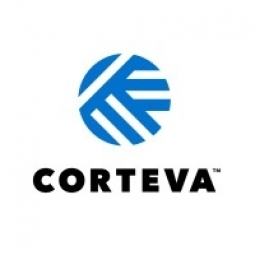Corteva Agriscience

Overview
|
HQ Location
United States
|
Year Founded
2019
|
Company Type
Public
|
Revenue
> $10b
|
|
Employees
10,001 - 50,000
|
Website
|
Stock Ticker
CTVA (NYSE)
|
Twitter Handle
|
Company Description
Corteva Agriscience combines industry-leading innovations, high-touch customer engagement and operational execution to profitably deliver solutions for the world's most pressing agriculture challenges. Corteva generates advantaged market preference through its unique distribution strategy, together with its balanced and globally diverse mix of seed, crop protection, and digital products and services.

Supplier missing?
Start adding your own!
Register with your work email and create a new supplier profile for your business.
Case Studies.
Case Study
A Top-notch Program: CHS, Inc. Grain Terminal in Savage, MN Values Oneweigh Software’s Reliability
The CHS, Inc. grain terminal in Savage, MN faced a significant challenge when they decided to switch over to the oneWeigh™ scale automation system from Cultura Technologies. The switch happened in late February 2011, at a time when the Minnesota River had breached its banks, and the terminal was shut down. As a result, the terminal was already facing a backlog of inbound grain trucks. To catch up, the terminal was soon handling 400 to 500 trucks daily using oneWeigh. While these volumes aren’t all that unusual at the terminal, the situation was still less than ideal for testing a new system because there was virtually no opportunity for training.
Case Study
Using Data for Risk Management
Walnut Grove Farms, a sixth-generation farm in Kentucky, was facing challenges in managing their grain marketing strategy. They were heavily reliant on forward contracting, which was only viable when the price was right. However, recent market conditions had seen prices fall below break-even for most farms. The farm also had to be strategic about their storage capacity, as they could not store everything they produced. They needed a way to better manage their risk and take advantage of market opportunities.
Case Study
Making Profitable Decisions with Data
Running Lake Farms, a family-owned farm in Pocahontas, AR, was facing challenges in forecasting its profitability at the beginning of each season. The farm's profitability was dependent on various factors such as the cost of inputs, yield, and market prices. The farm was also struggling with identifying unprofitable fields and understanding the reasons behind their lack of profitability. The farm needed a solution that could help them analyze their data and make informed decisions.
Case Study
Using Machine Data For Profitability
Anson Family Farms, a large farming operation spread across 20,000 acres in 8 counties in Indiana and Illinois, was facing challenges in managing and utilizing the vast amount of data collected by their John Deere equipment. The data, which included information on planting, spraying, harvesting, etc., was primarily used for crop insurance reporting. However, the farm was unable to use this data to optimize operations due to technological limitations. The data was initially stored on a desktop machine, then moved to a server, but both methods were slow and cumbersome. The farm also struggled with real-time data access, which made it difficult to identify and correct errors in a timely manner.
Case Study
Managing Input Inventories with Granular
Clete Inc., a diversified farming and cattle operation, was facing challenges in managing their input inventories. The process of planning for the inputs needed each growing season was manual and time-consuming. The team had to sit together to decide the acreage for each crop and then manually estimate the required inputs. They relied heavily on local suppliers for their inputs and valued the customer service and timely delivery. However, unexpected changes in plans or field activity often led to discrepancies and required constant communication and updates. The company was using Excel for inventory management, which was not efficient and prone to errors.
Case Study
Scale Automation System
Bunge’s soybean processing operation in Council Bluffs, IA is the largest such plant in the United States, processing 60 million bushels of soybeans per year into high-protein soybean meal, soy hull pellets, and crude soybean oil. Handling such a huge volume of incoming raw material and outgoing finished product is a daunting task. The plant receives and processes soybeans and produces finished products, loading approximately 70,000 trucks and 17,000 railcars annually. The challenge was to manage the massive volume of incoming raw material and outgoing finished product efficiently.
Case Study
Export Wheat Terminal - GAVILON TAPS MONTANA’S RICHEST WHEAT-GROWING COUNTRY
The fertile plains in the north central part of Montana, just east of the Rockies and south of the Canadian border, is often called the Hi-Line. It refers to the main line of the Burlington Northern Santa Fe (BNSF) railroad, originally the Great Northern Railway, the northernmost line of the 19th century transcontinental railroads. The Hi-Line’s major purpose was to carry wheat from Montana back east to the big flour mills around Minneapolis, MN or farther west for export from the Pacific Northwest. That is still its major purpose today and the main reason Gavilon Grain, LLC chose to build a brand new rail terminal elevator on a loop track at Chester, MT. This area of the Hi-Line doesn’t always get the most rainfall, so the yields aren’t always the best. But the quality of the wheat here is very good, and Gavilon wanted this type of grain for export at their joint venture terminal in Kalama, WA.





